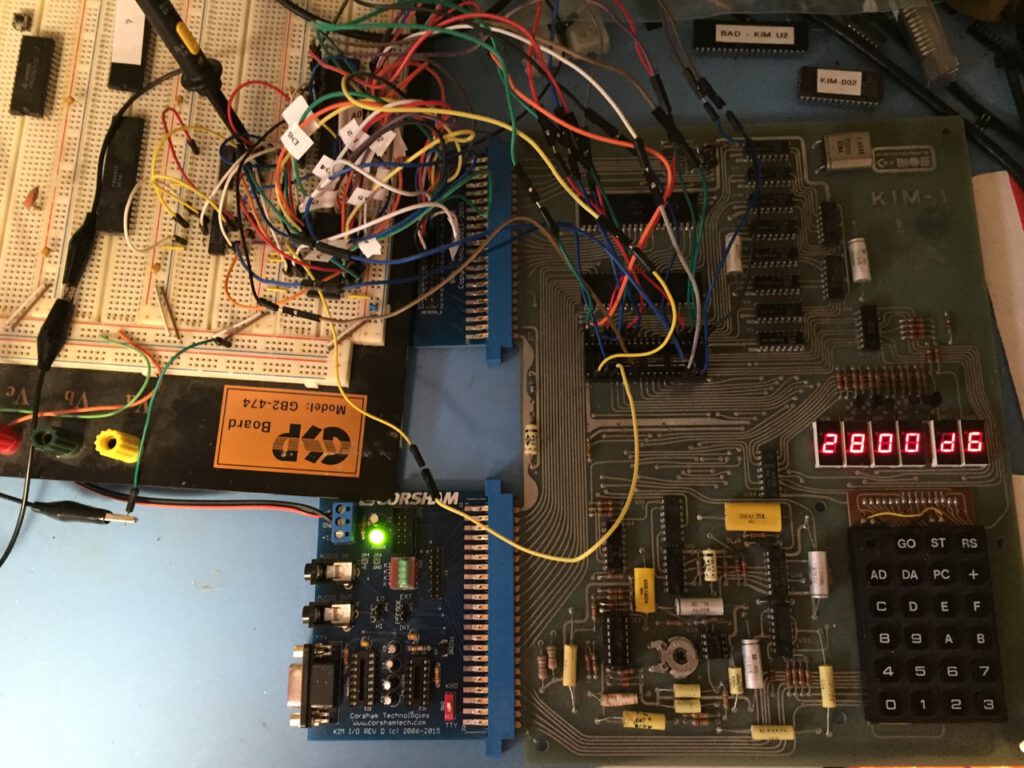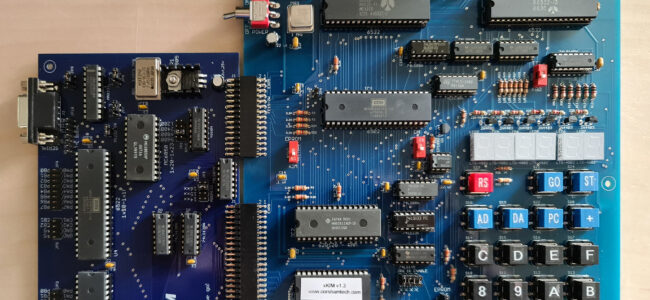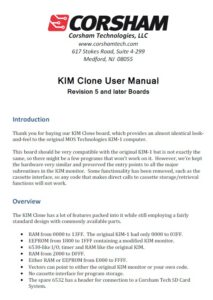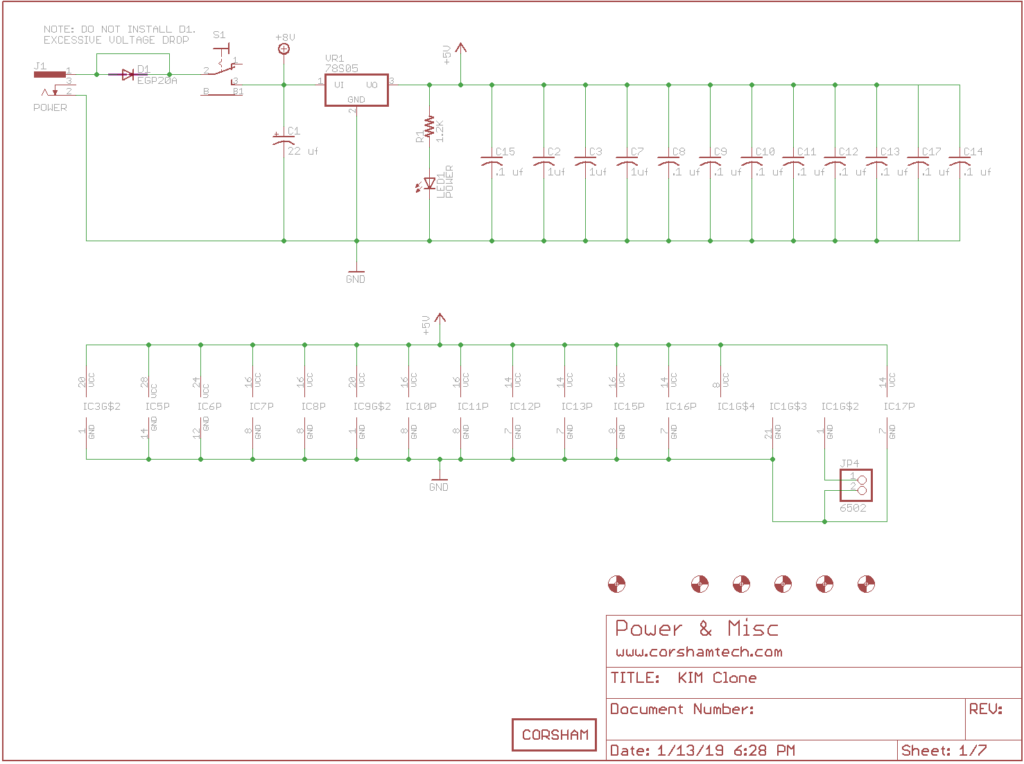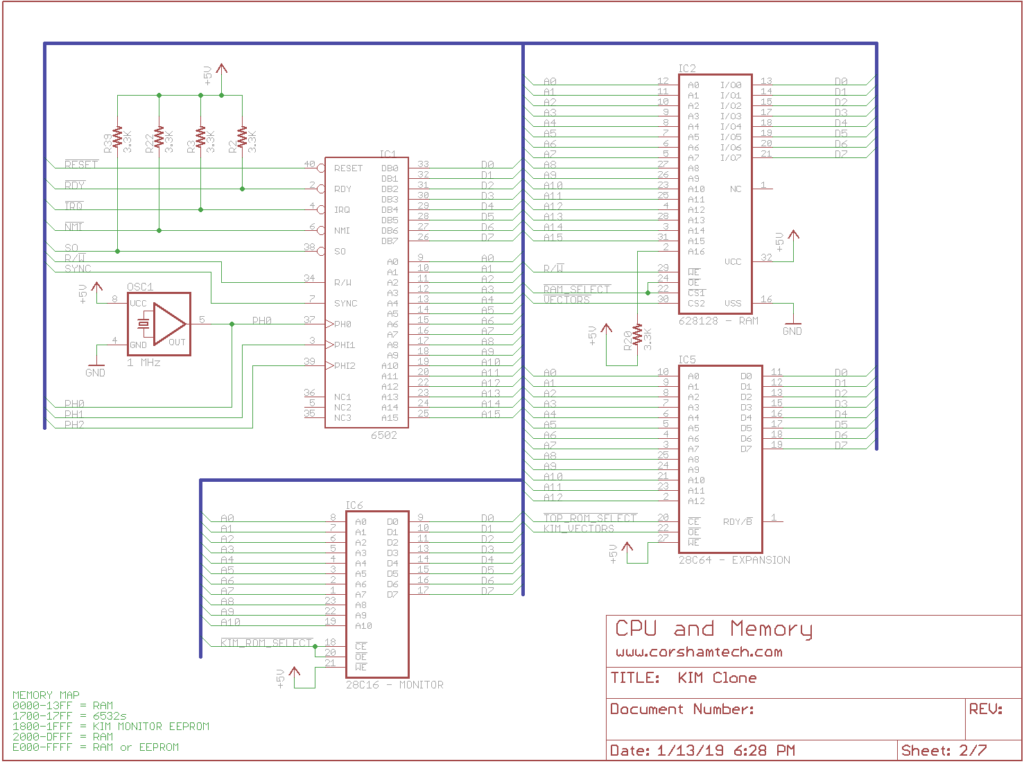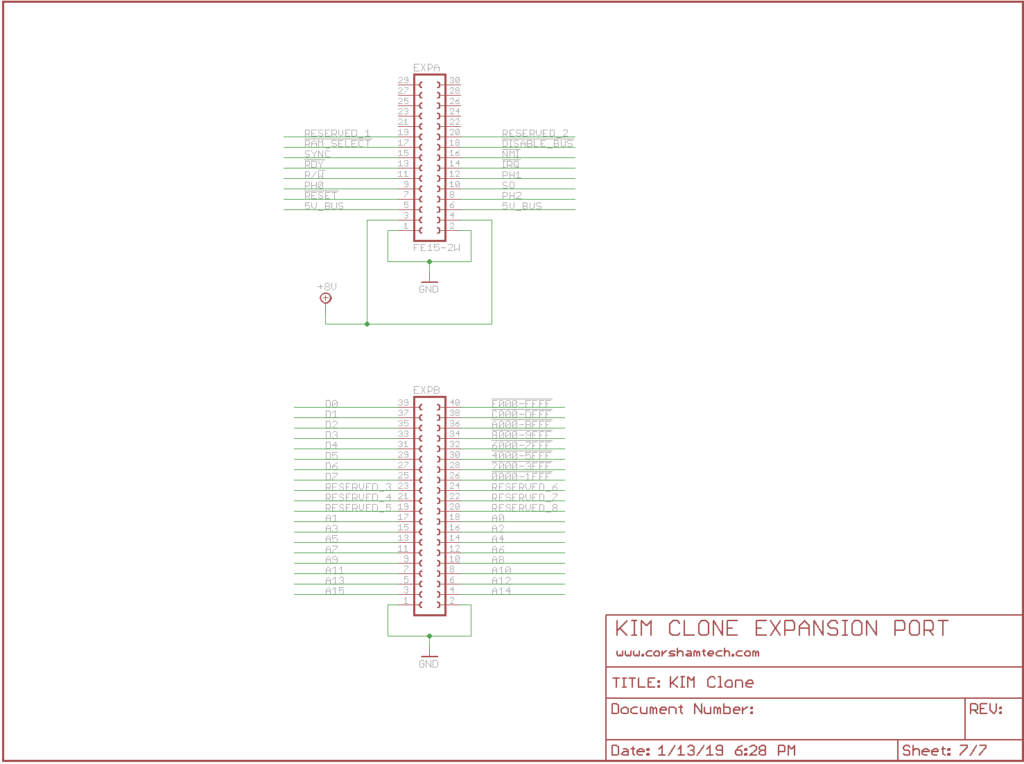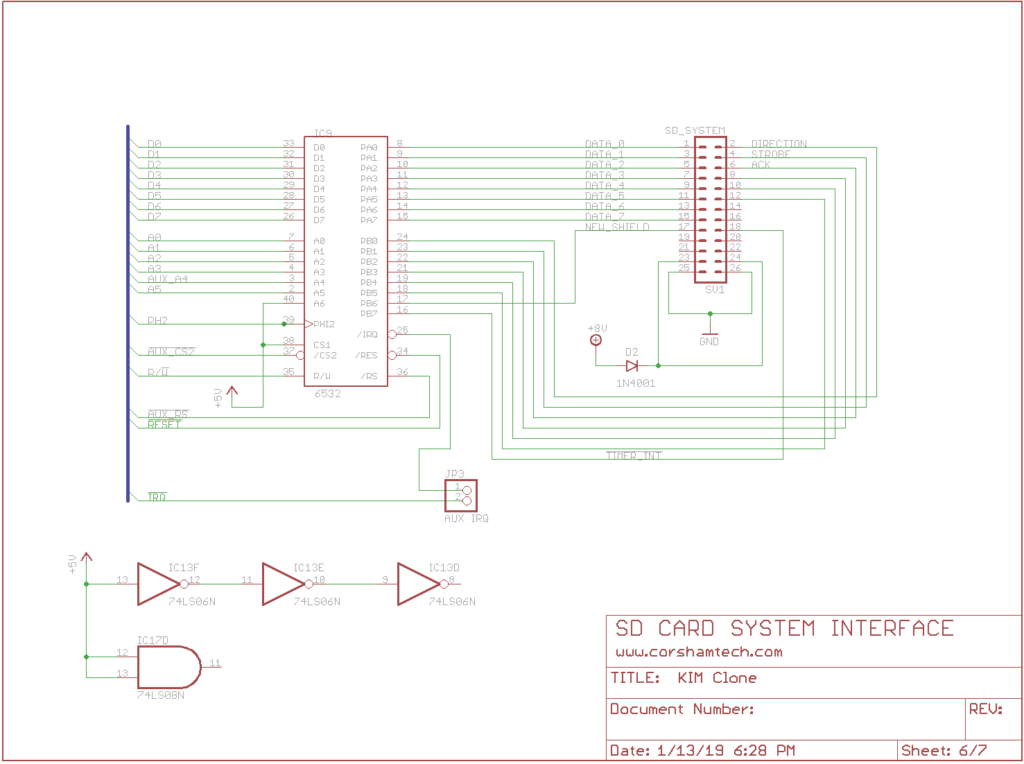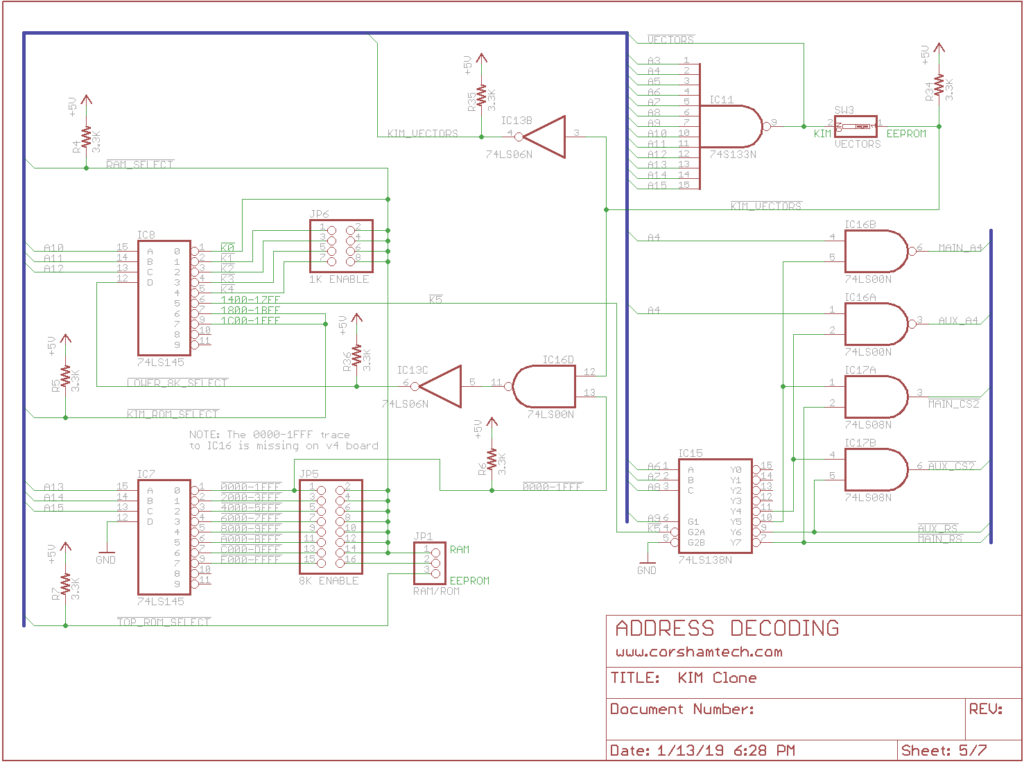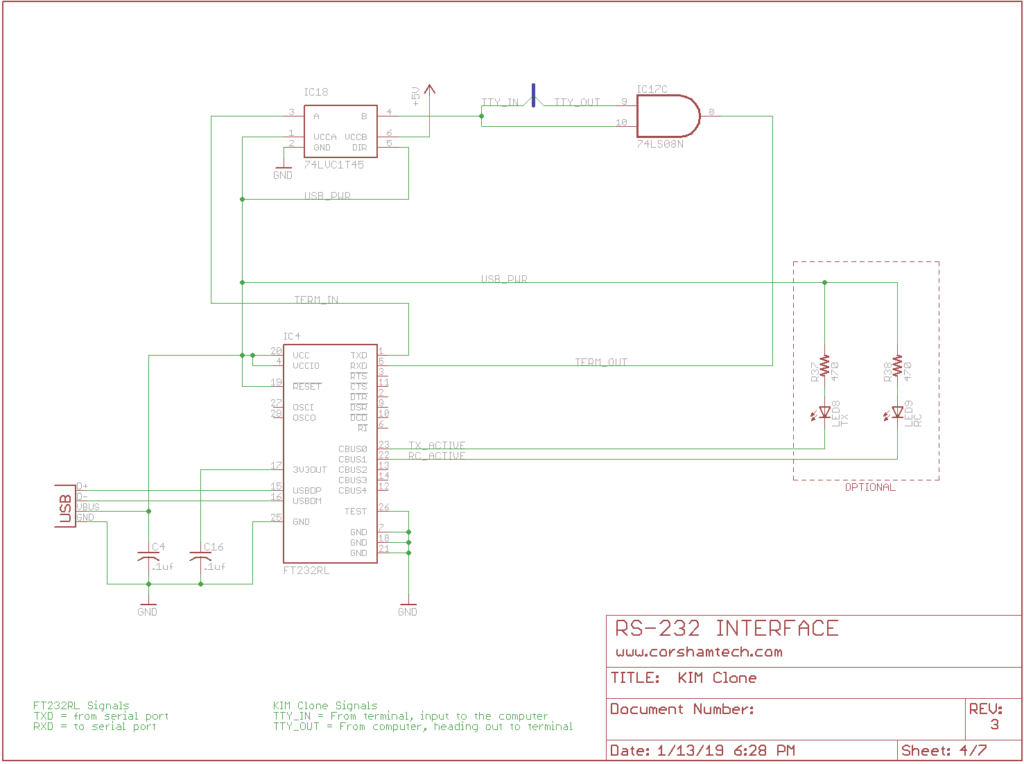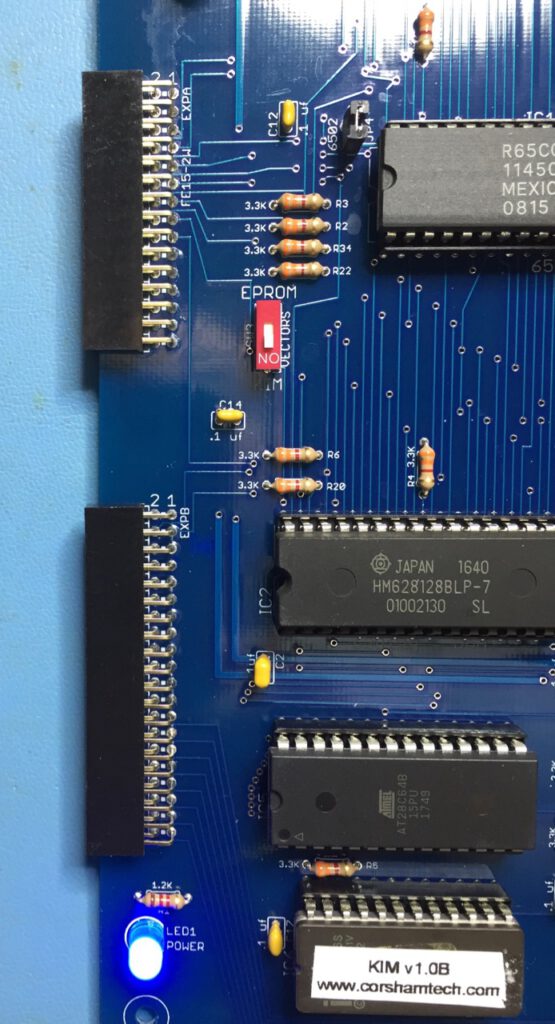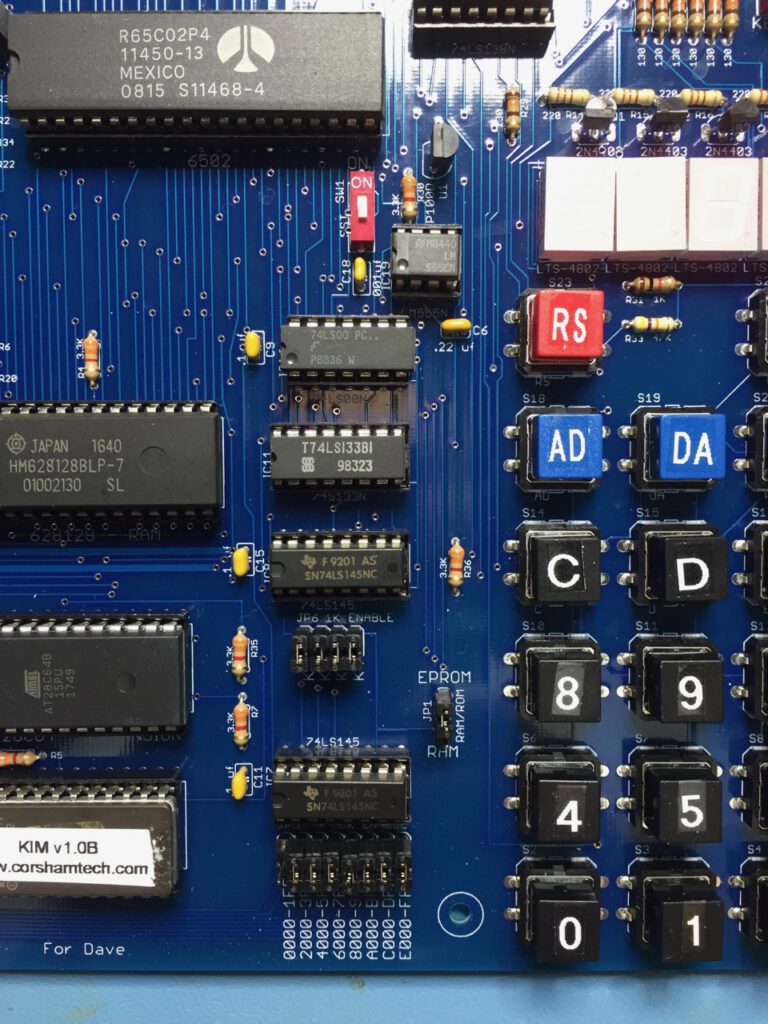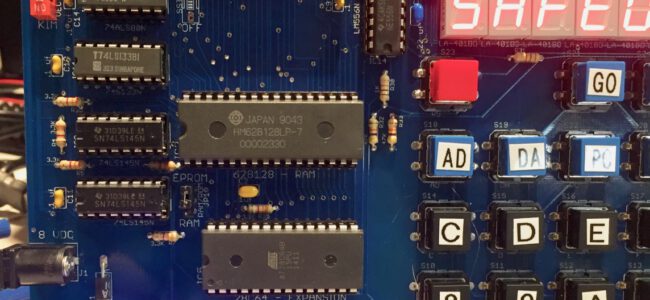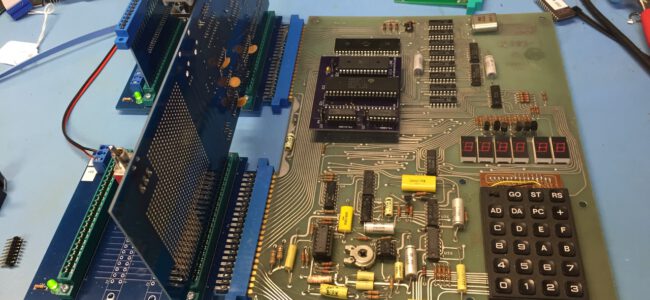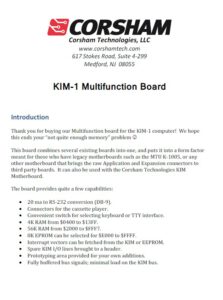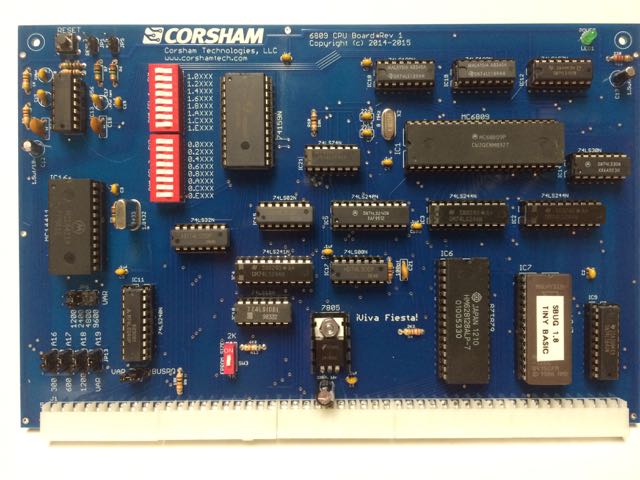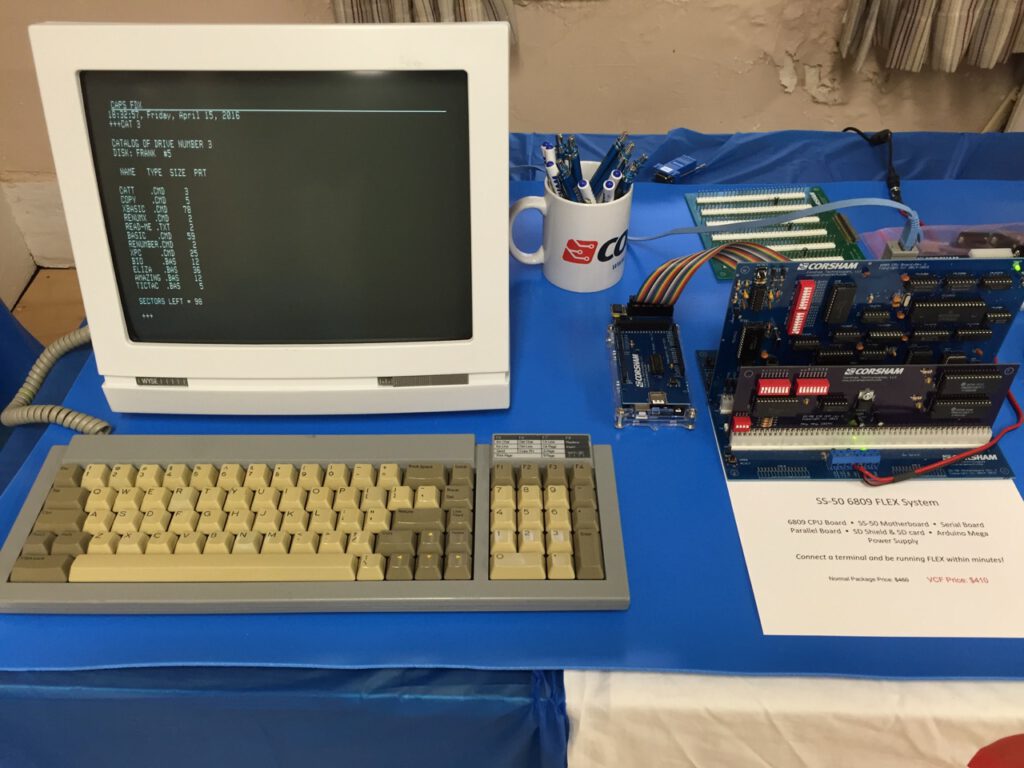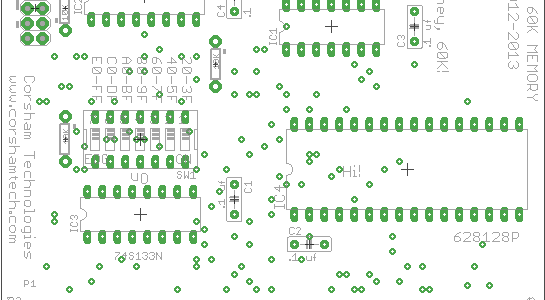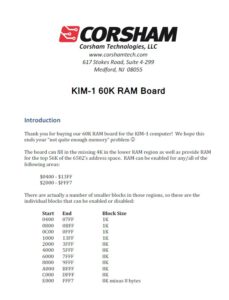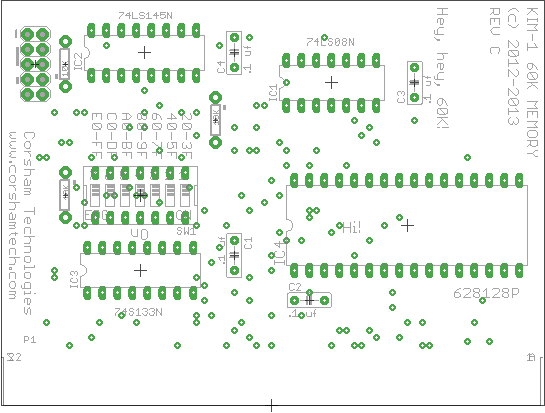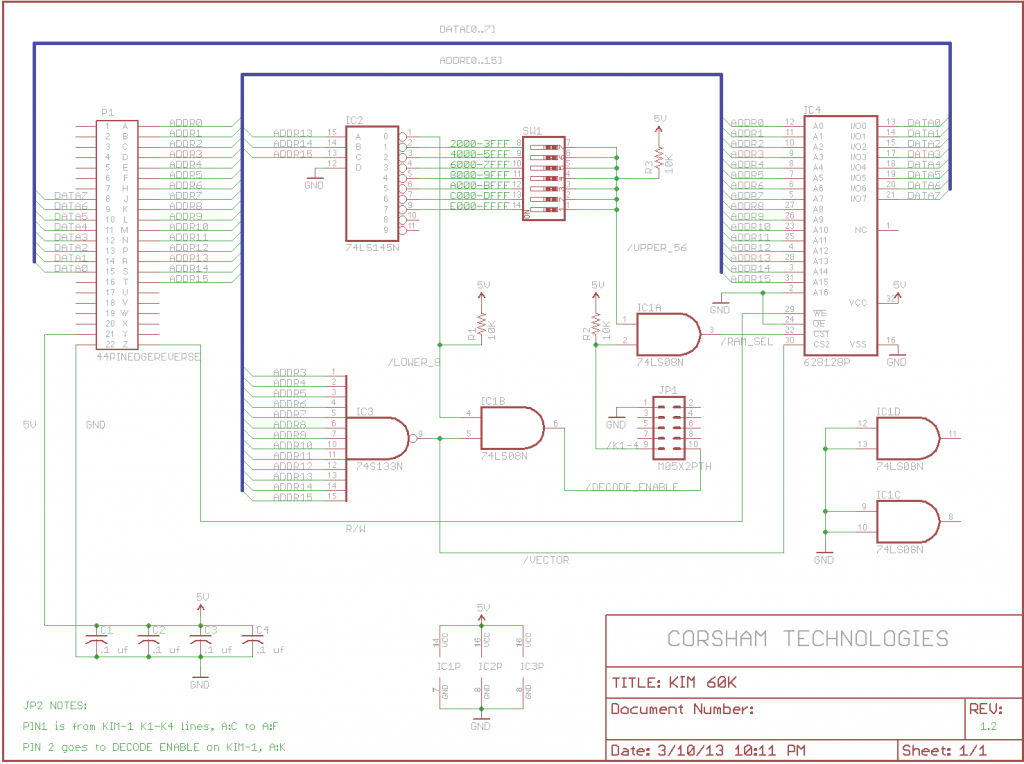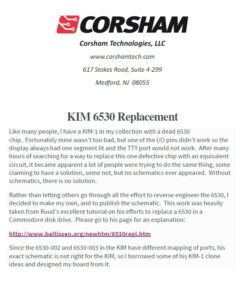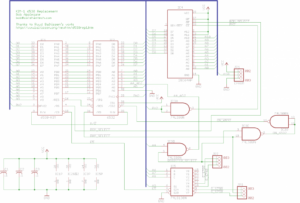Fix for KIM Clone Single-Step Problem
Rev 1B and rev 2 boards have a problem where single-step mode does not work. It works for old 6502s but not for newer ones nor 65C02. The solution was very simple: add a .001 uf capacitor across U16 pins 7 and 8. All assembled KIM Clones now have the modification and future revisions of the board will have the capacitor on the motherboard.
KIM Clone I/O Not Receiving Serial Data
While testing the KIM Clone I/O Board I was using a real ASCII terminal and everything was working exactly as it should. After the board was in product a dedicated tool was written to run complete tests of the board and the serial port was no longer receiving data.
As it turns out, it is possible to set the various jumpers on the board so that the DCD line on the 6850 is floating, and it tends to float to a state where it ignores incoming data. My test jig simply loops back pins 2 and 3, leaving DCD unconnected.
The easiest solution is to pull the jumper off JP8, then place it between pins 6 and 7 on JP10. This forces the DCD to ground, which allows the receiver to work as expected.
Depending on your application, whatever is connected to the DB-9 might pull DCD to the active state which also allows the receiver to work properly.
Future revisions of the board will have a pull-down resistor on both DCD and CTS so unconnected inputs will default to the proper levels for normal operation of the ACIA.
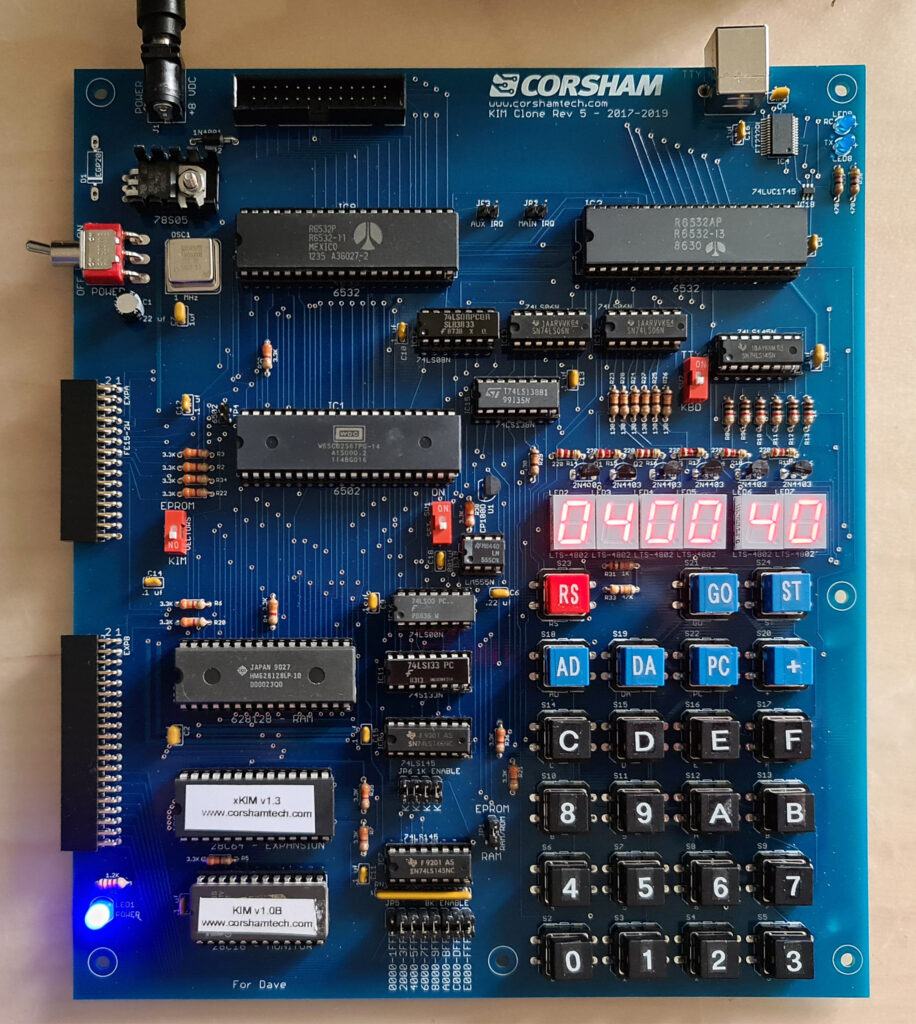
After almost a year (2019)of on-again, off-again, development we finally have a new revision of the KIM Clone.
It has everything the previous versions have, but with a few improvements people have asked for (or I wanted):
Expansion bus connectors! This was widely requested. Includes most processor signals, address and data buses, along with bank decoding lines. This is intended to plug into either a prototype board (more on this later) or a motherboard (in the works).
More jumpers to enable/disable blocks of RAM from being decoded. K1-K4 each have jumpers, and 8K blocks for the entire memory map have another set of jumpers. This allows blocks to be disabled on-board, then mapped to a user-supplied circuit.
Power on reset. Not a major feature, but I didn’t like having to press RS every time I turned on my KIM-1.
Power connector and the power switch moved to the top edge of the board.
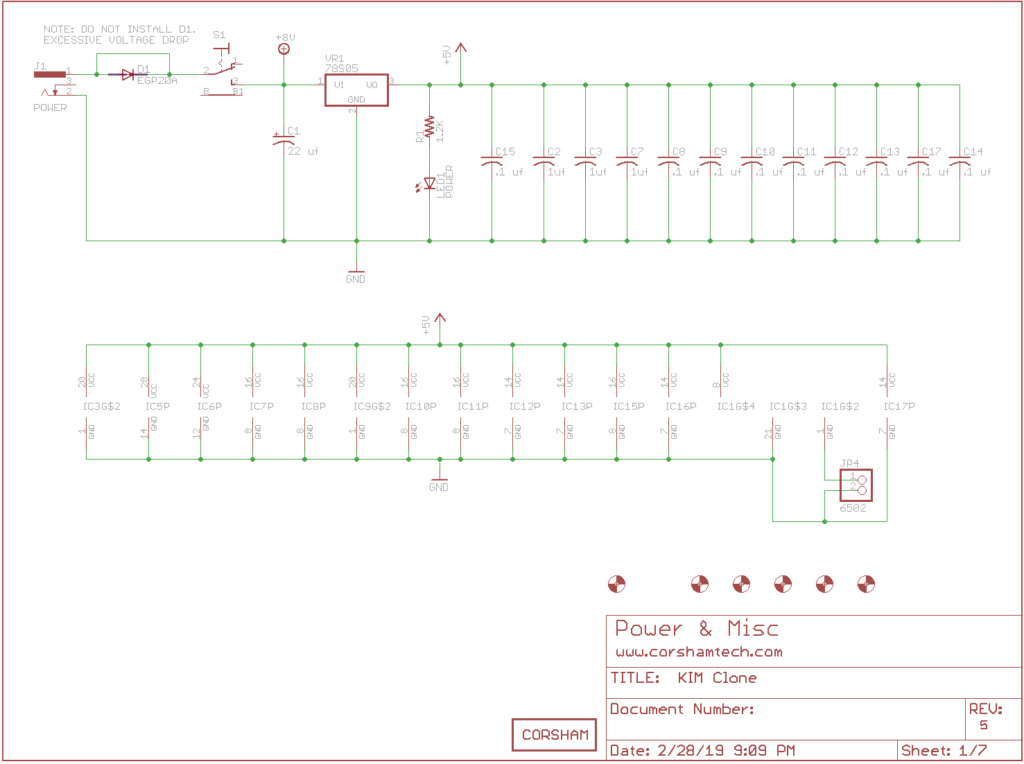
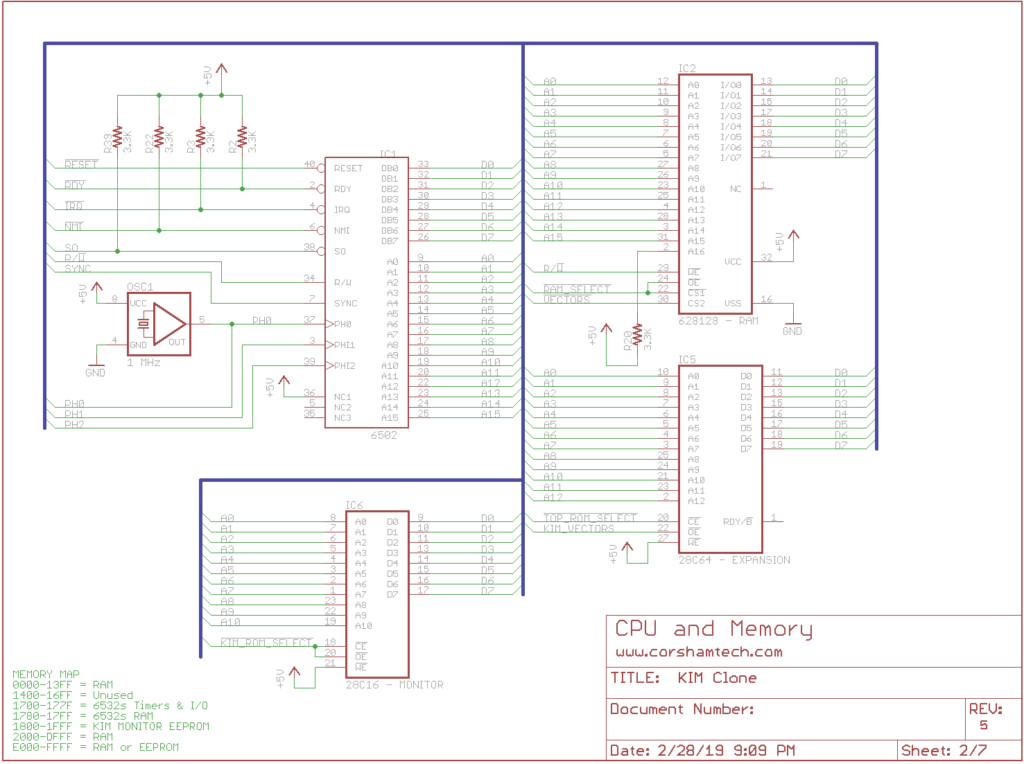
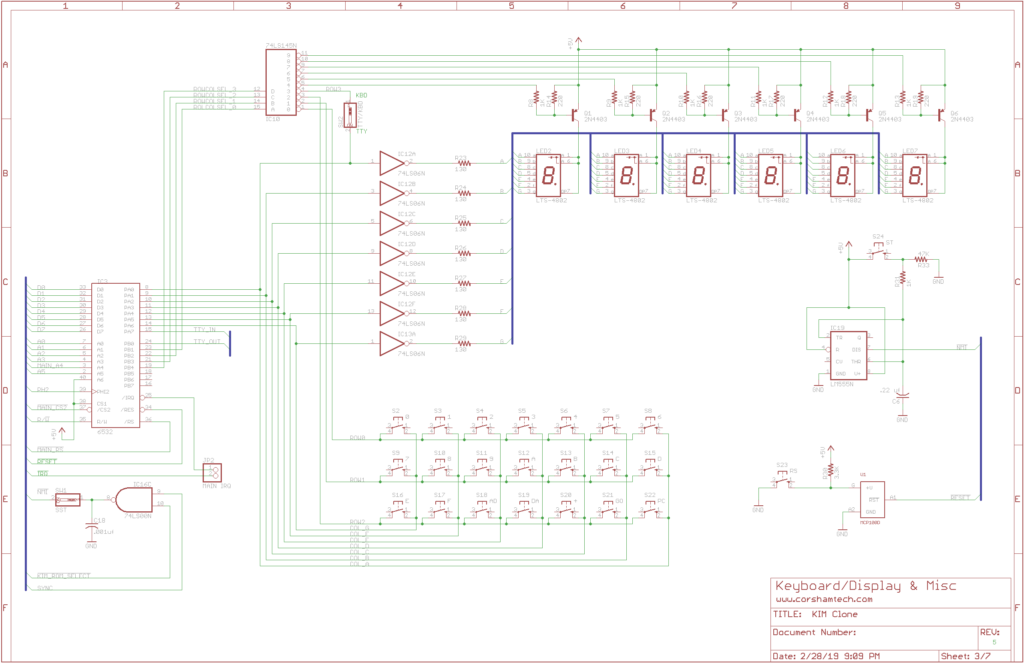
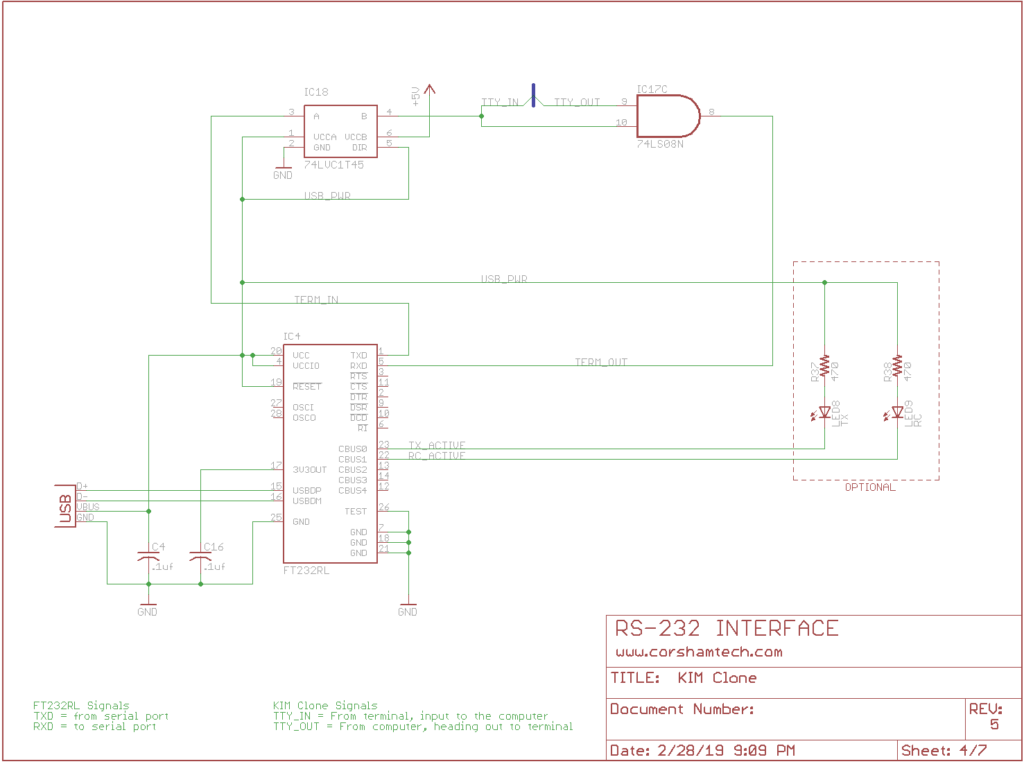
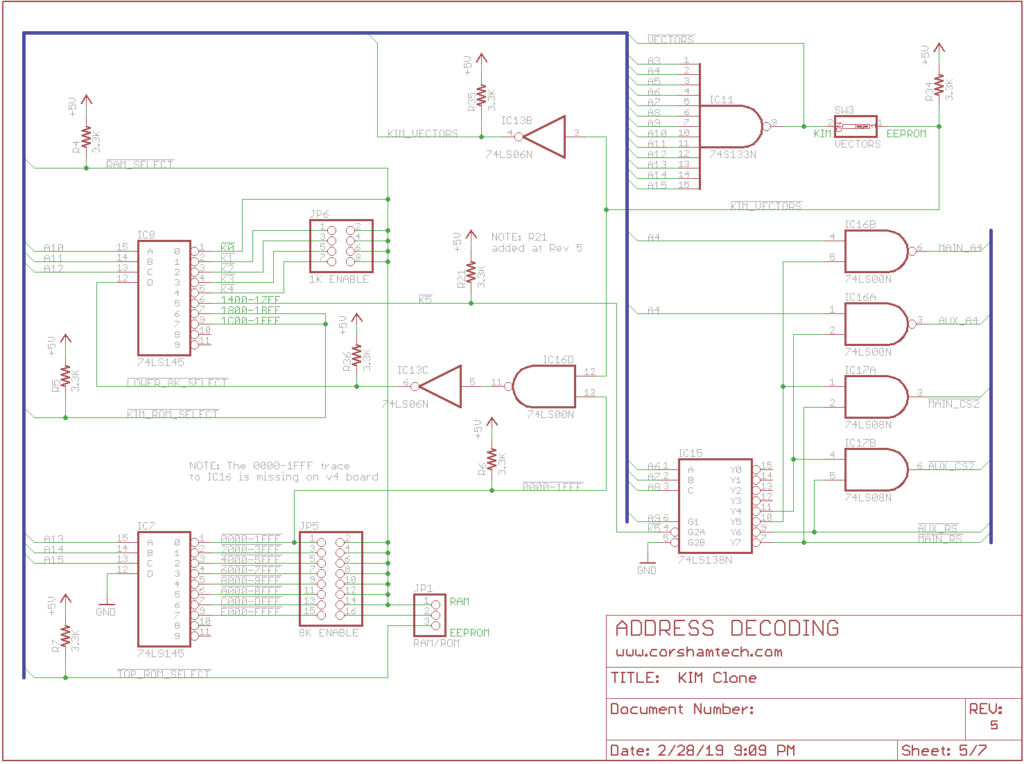
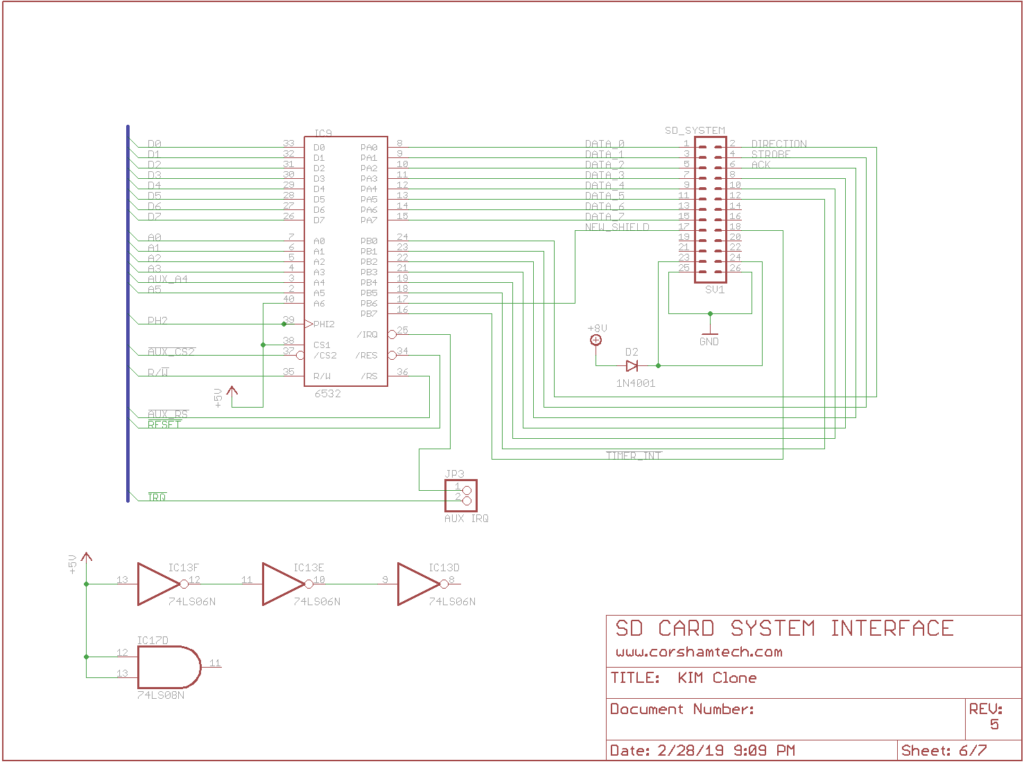
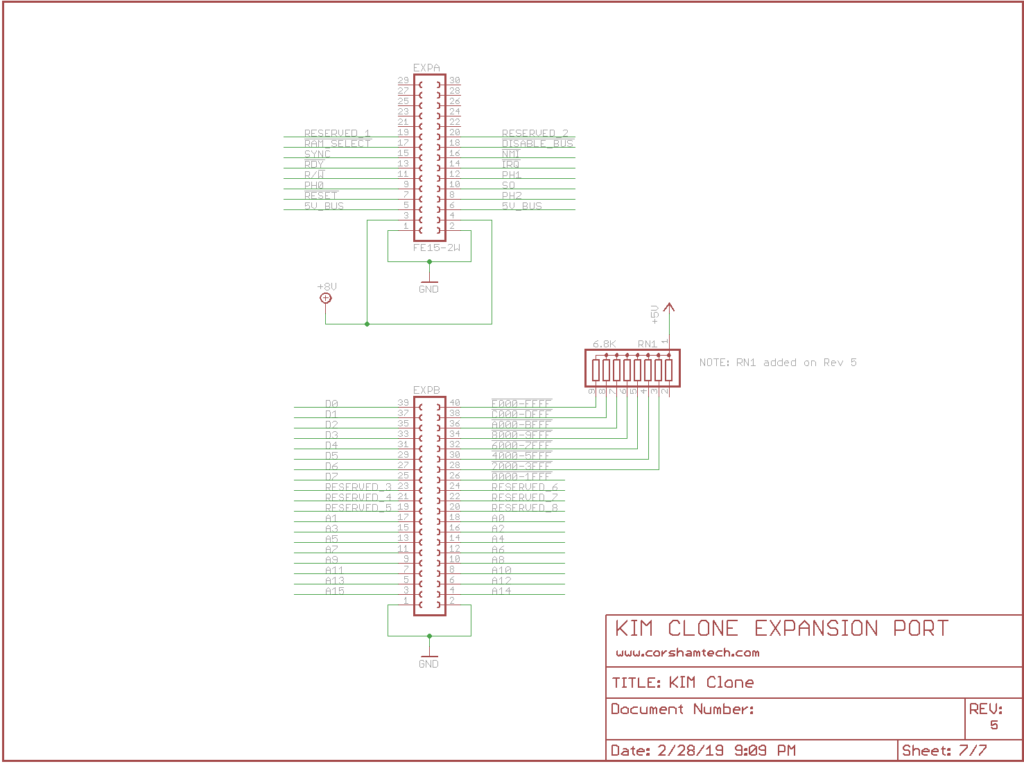

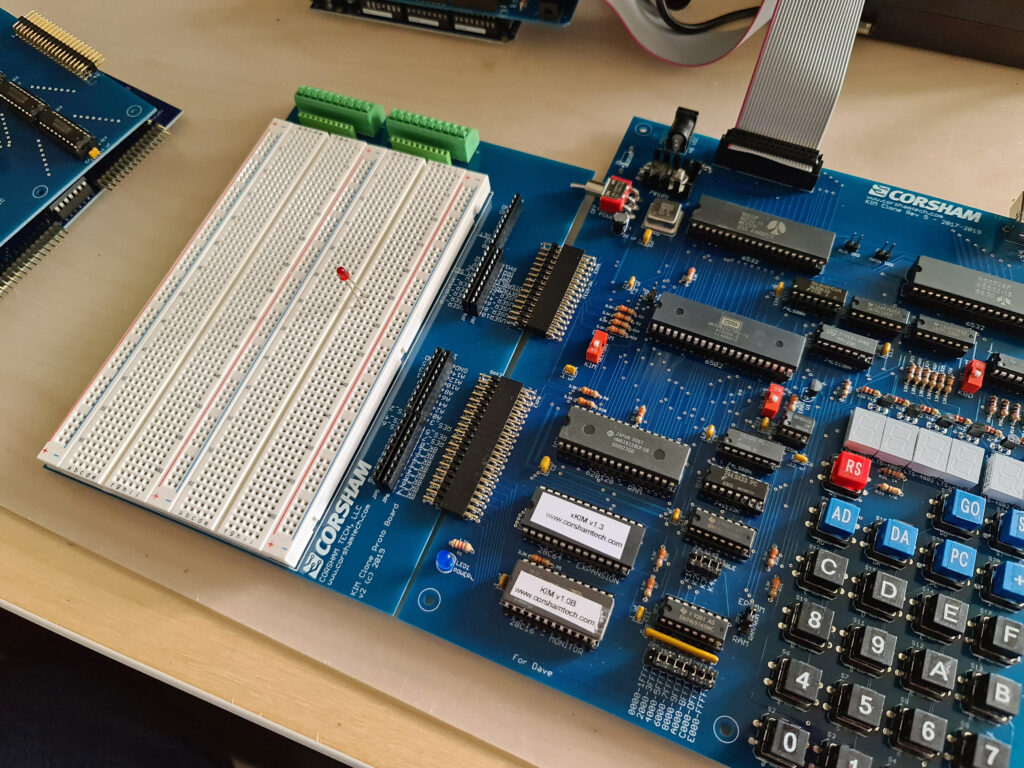

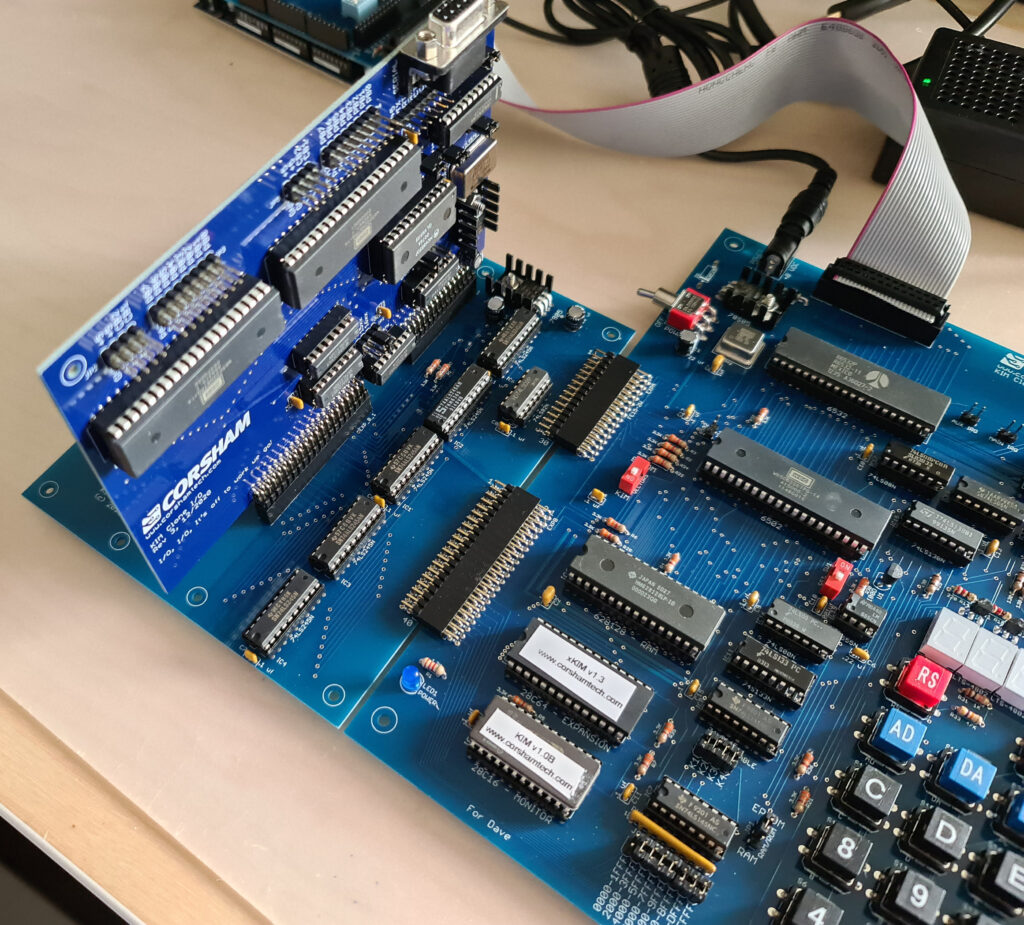

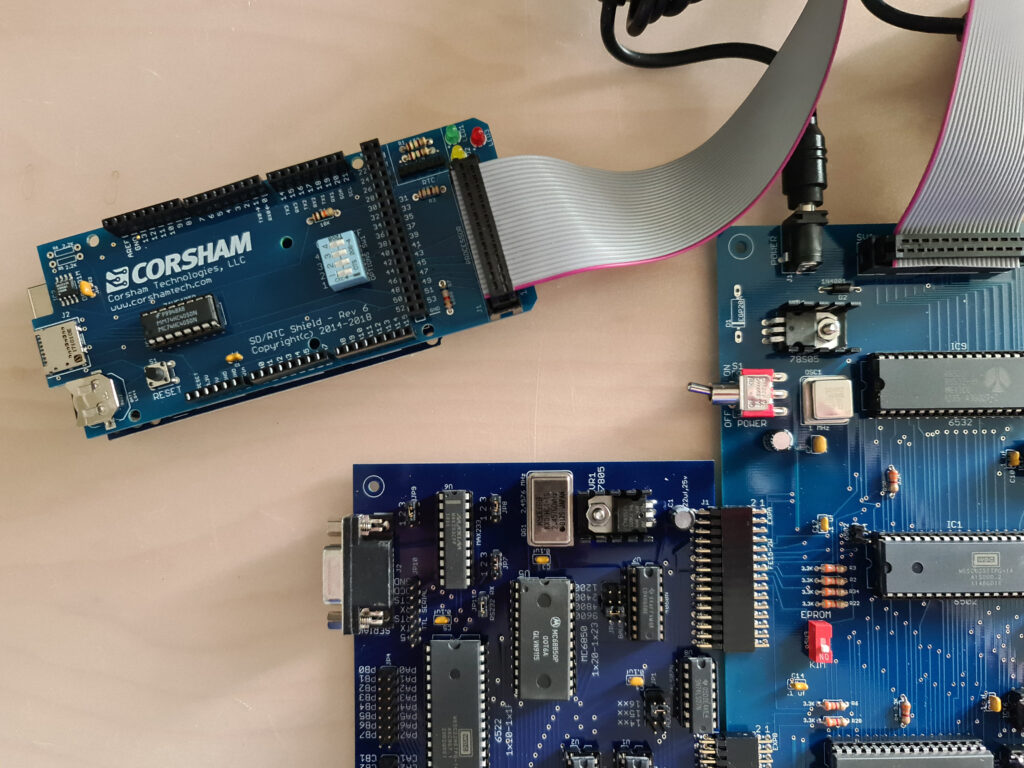
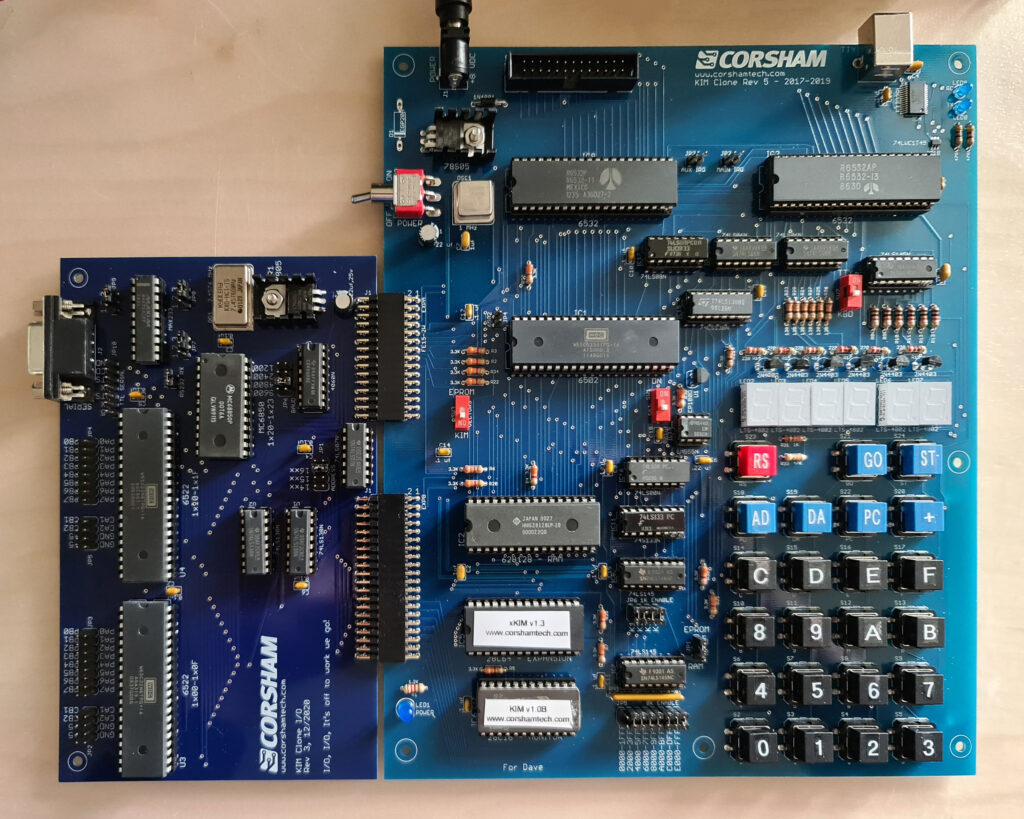
Changes between Revision 2 and Revision 3 Boards
Revision 3 boards had a number of minor changes to fix know issues on Revision 2 boards. No new features or capabilities were added.
– IC19 was removed
–IC18 changed from 74AVC1T45 to 74LVC1T45
– IC16 changed to 74LS00
– IC7 and IC8 changed to 74LS145
– R37 and R38 changed to 470 ohms
– C18 was added
– IC17 had power routing fixed
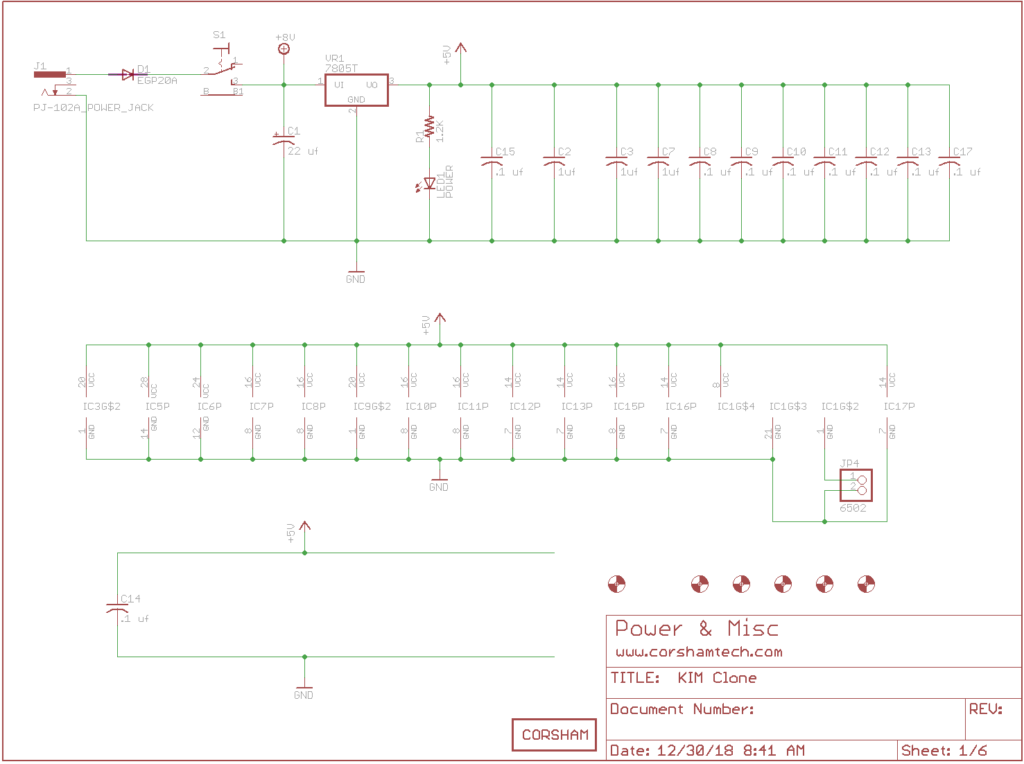
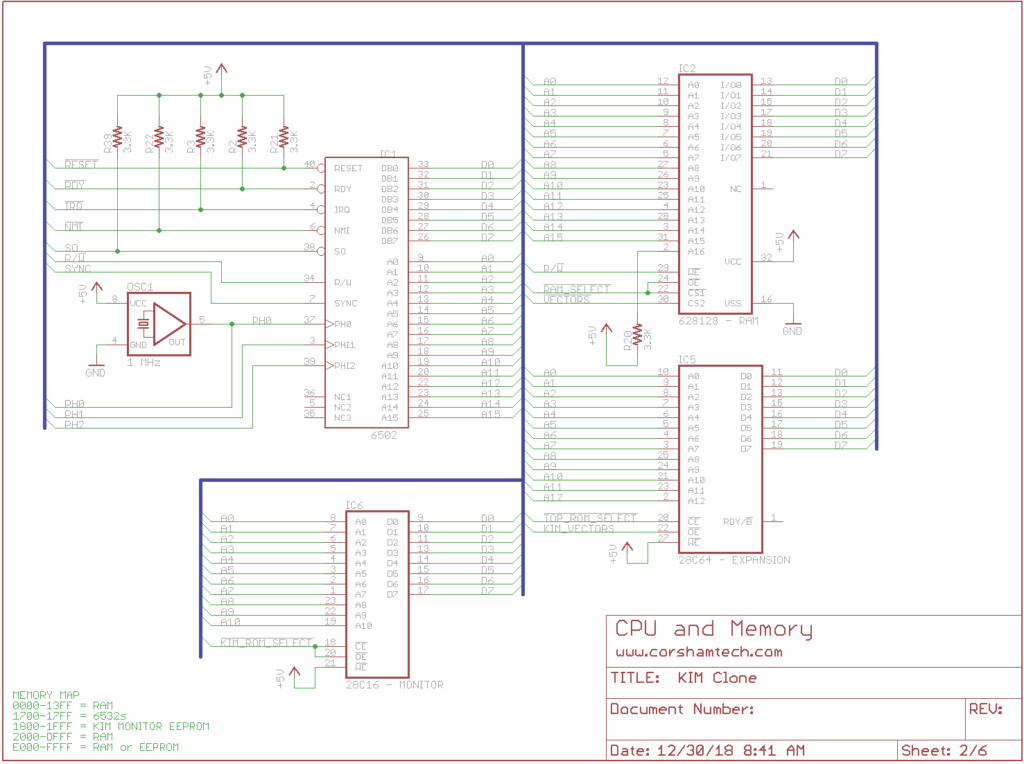
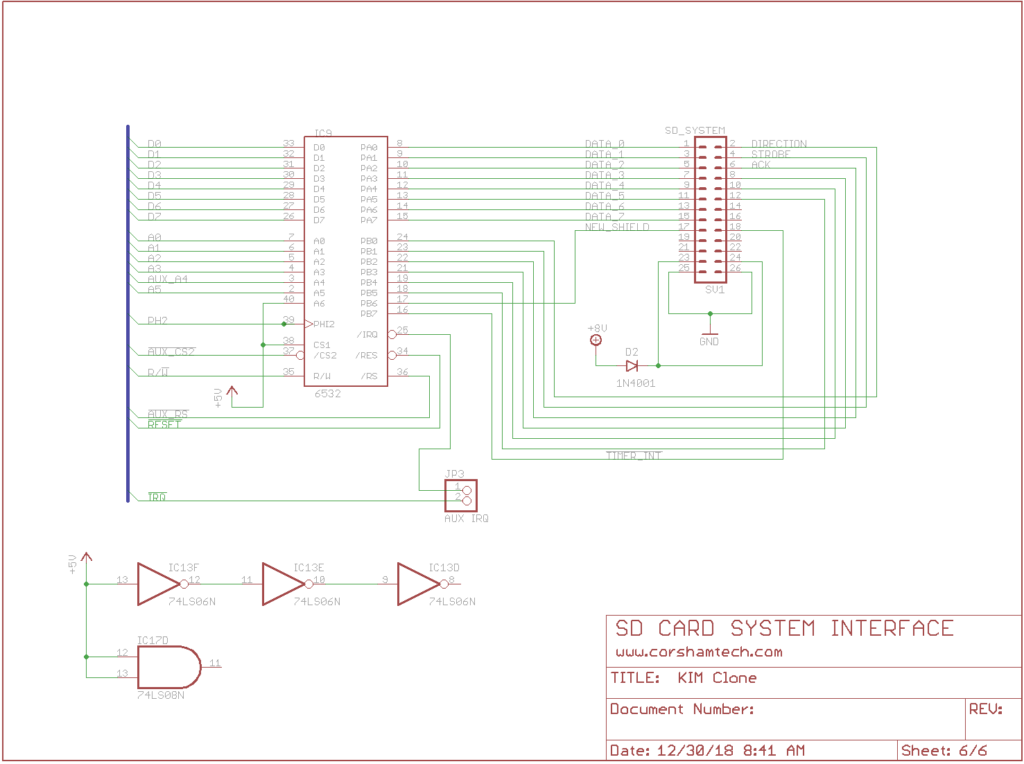
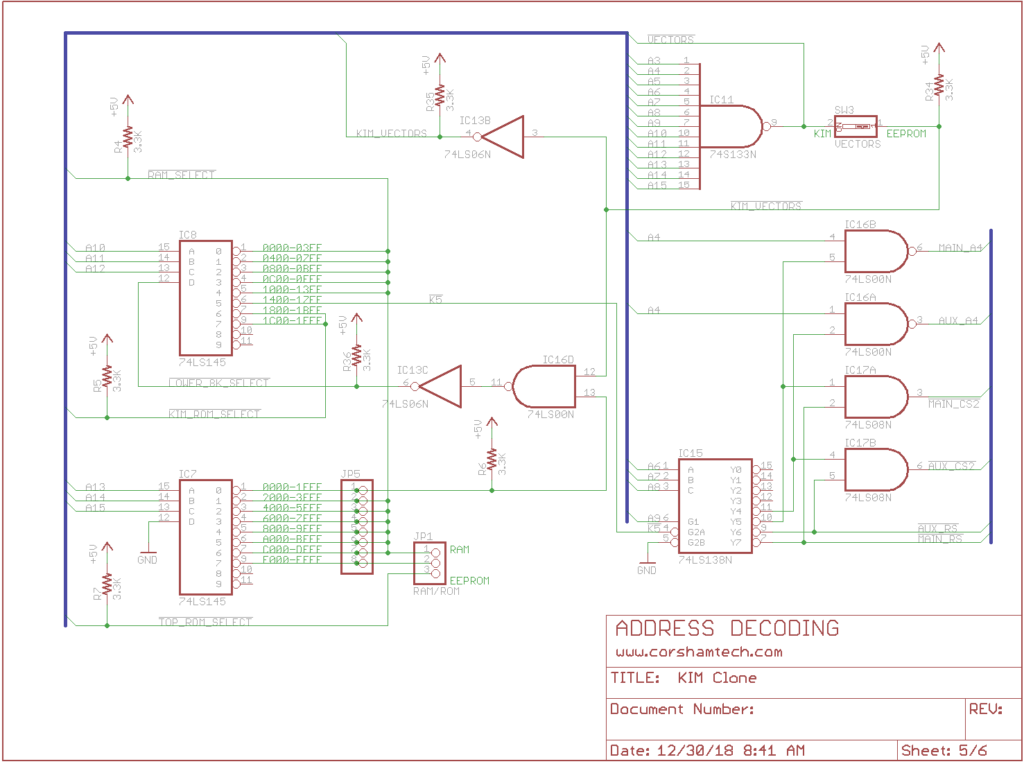
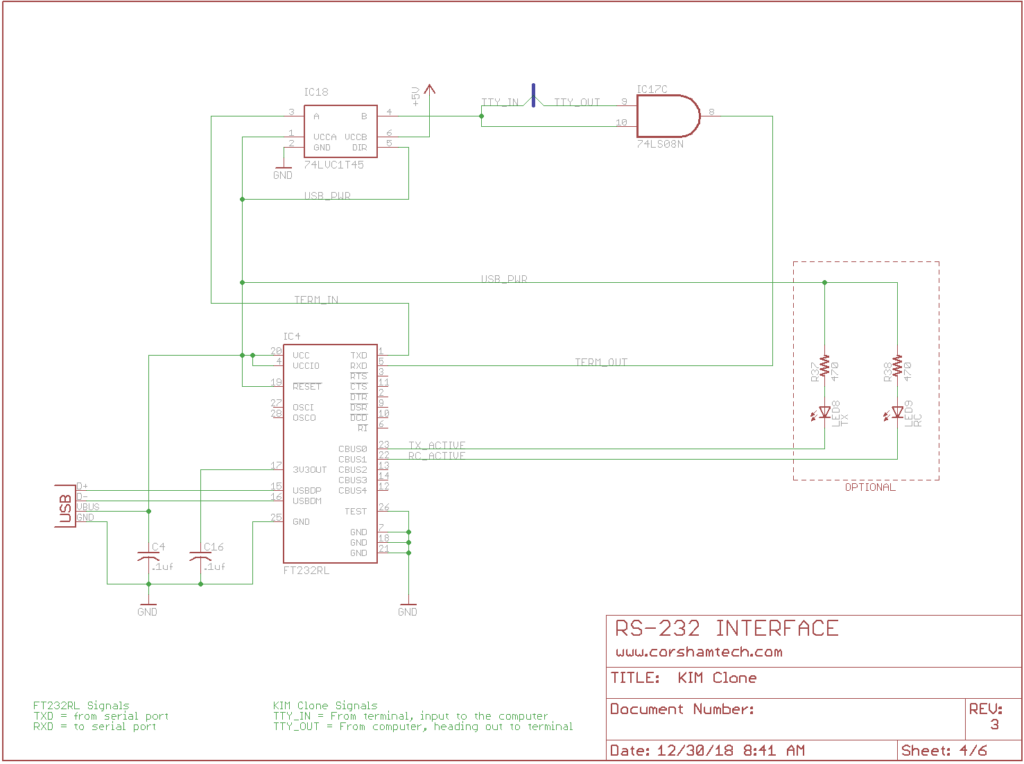
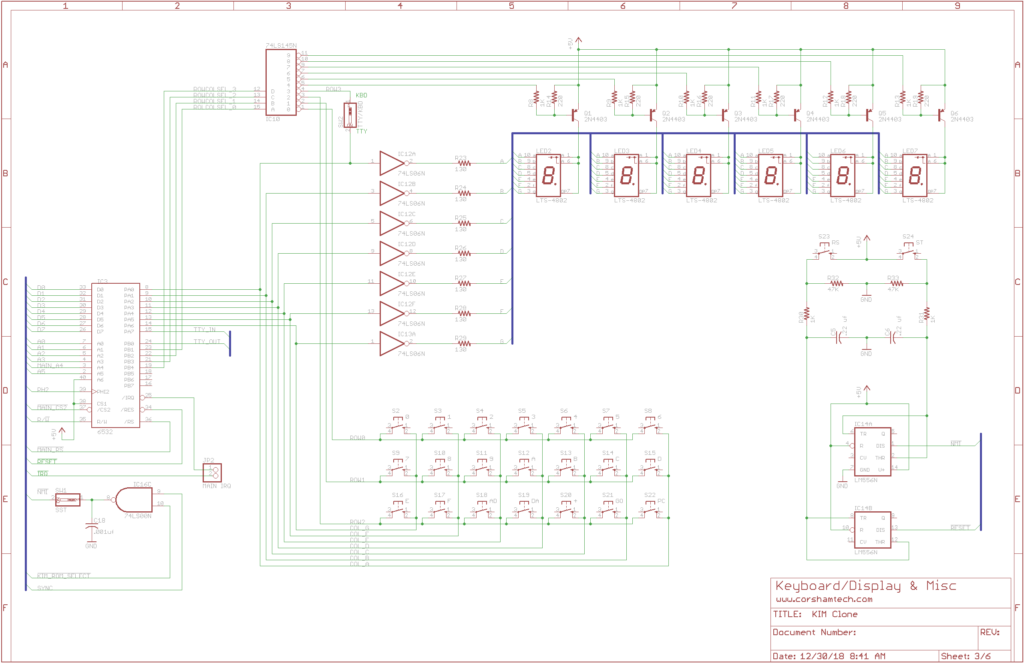
In 2017 Bob Applegate started to design a KIM CLone.
He went to 5 versions.
The first were enhanced KIM-1 replica’s without expansion connectors but with lots of RAM and ROM. The later versions and 5 did have expansion connectors, and a Motherboard, I/O board and Protoboard were added.
This board combines several existing boards into one, and puts it into a form factor meant for those who have legacy motherboards such as the MTU K-1005, or any other motherboard that brings the raw Application and Expansion connectors to third party boards. It can also be used with the Corsham Technologies KIM Motherboard.

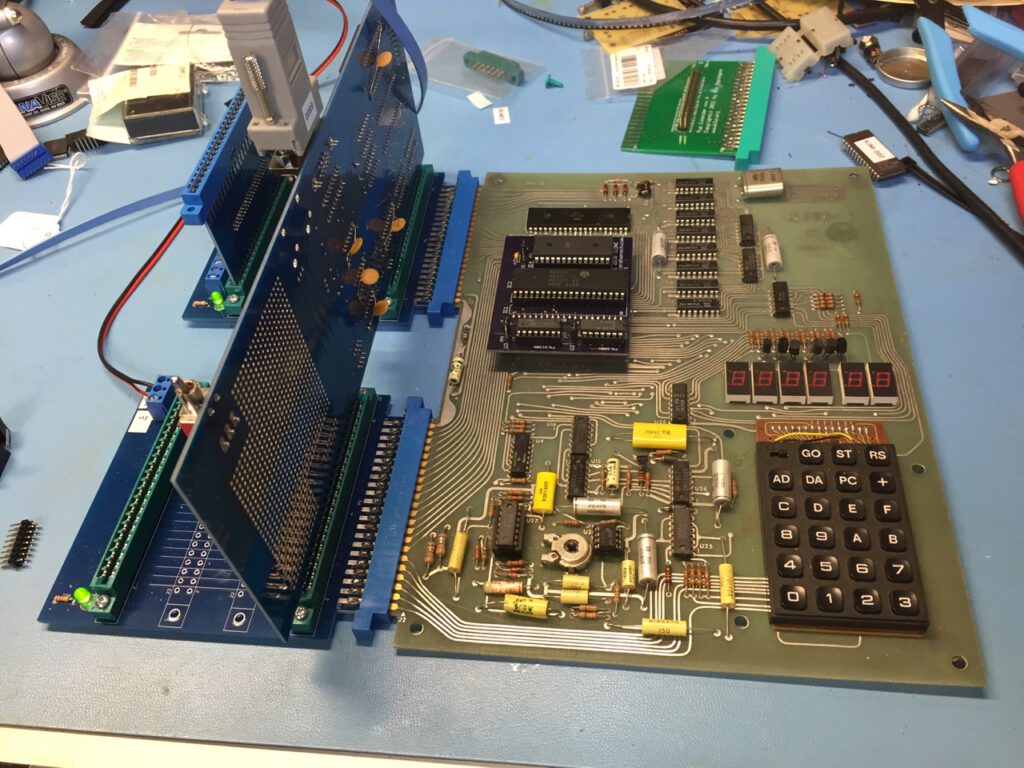
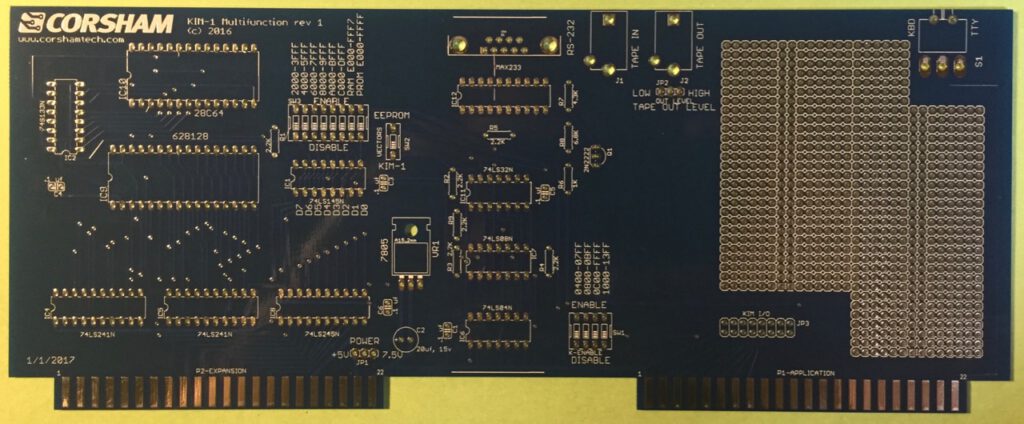


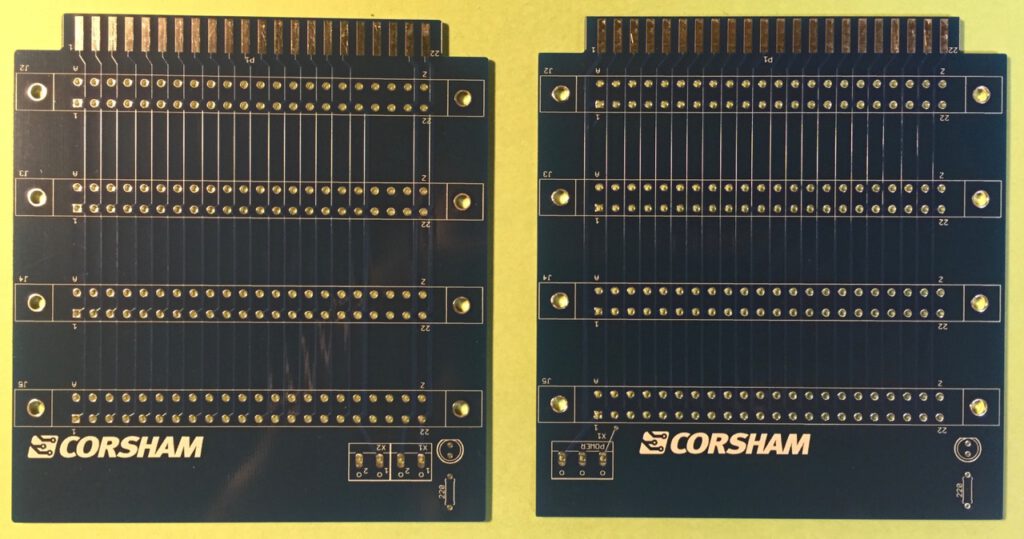
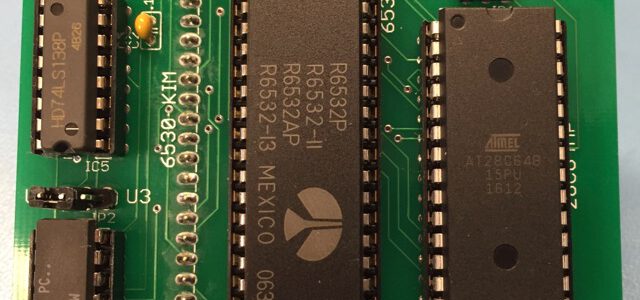
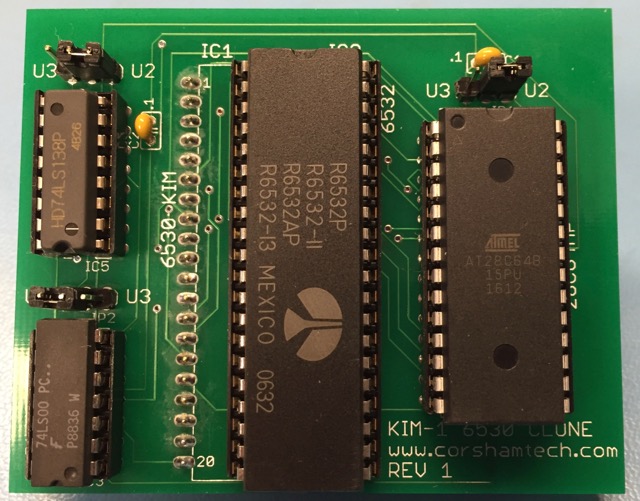
A very common problem with maintaining 40 year old computer systems is that some of the parts have not been made for many decades, such as the two 6530 chips on the KIM-1. Each contains several timers, 64 bytes of RAM, multiple parallel I/O ports and 1K of mask programmed ROM containing the KIM-1 monitor program. To make things even more complicated, each 6530 is mask programmed with a number of configuration options such as which interface pins and address lines select which internal devices.
Many people, Bob included, have at least one KIM-1 in their collections with a non-functioning 6530. Depending on what failed, the KIM might be quite usable, completely unusable, or someplace in between. For these people, there was little chance of ever fixing the problem because the two 6530s in the KIM are unavailable anywhere… not even on eBay! In an effort to fix his own KIM, Bob borrowed work of other people and developed a small board that can replace either 6530 on a KIM-1.
Basically this emulates the functionality of the non-functioning 6530 by using the I/O ports, RAM, and timers from the 6532 chip, and then having an external EEPROM hold the code that was in the ROM of the original chip.
The board replaced U2 (6530-002) on Bob’s KIM and produces a fully functional system again. This is a prototype board (strange board color) but is identical to the production version otherwise.
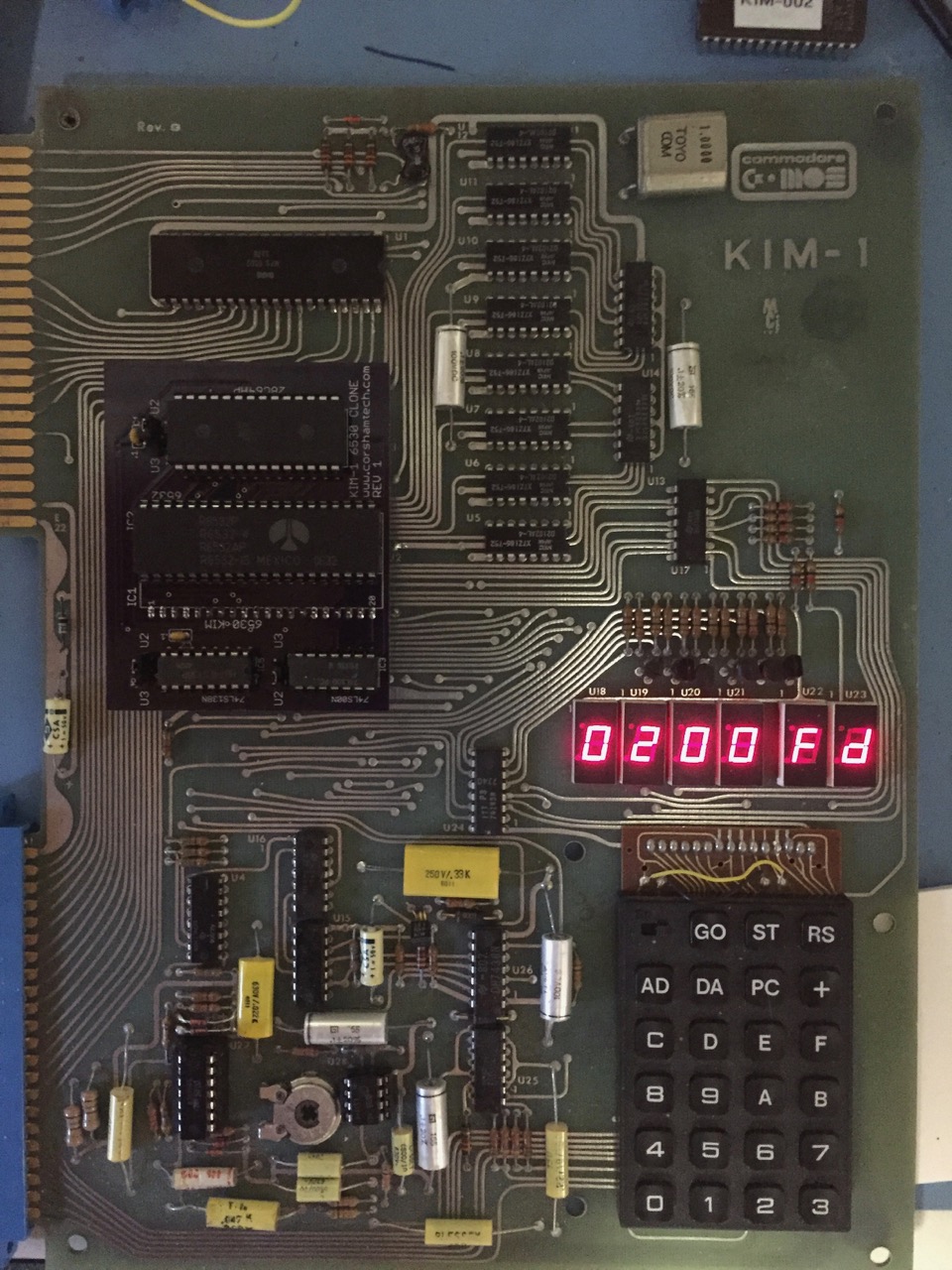
For full documentation, schematics, design files, Gerbers, EAGLE CAD files and other technical data please also see Bob’s development notes.
The assembled version is the quickest way, and the easiest. Just set the three jumpers to either U2 or U3 to indicate which chip you’re replacing, remove the old 6530, then plug in this board. Bob strongly suggest saving the original 6530 in case you ever decide to sell your KIM to a museum as a static display.
